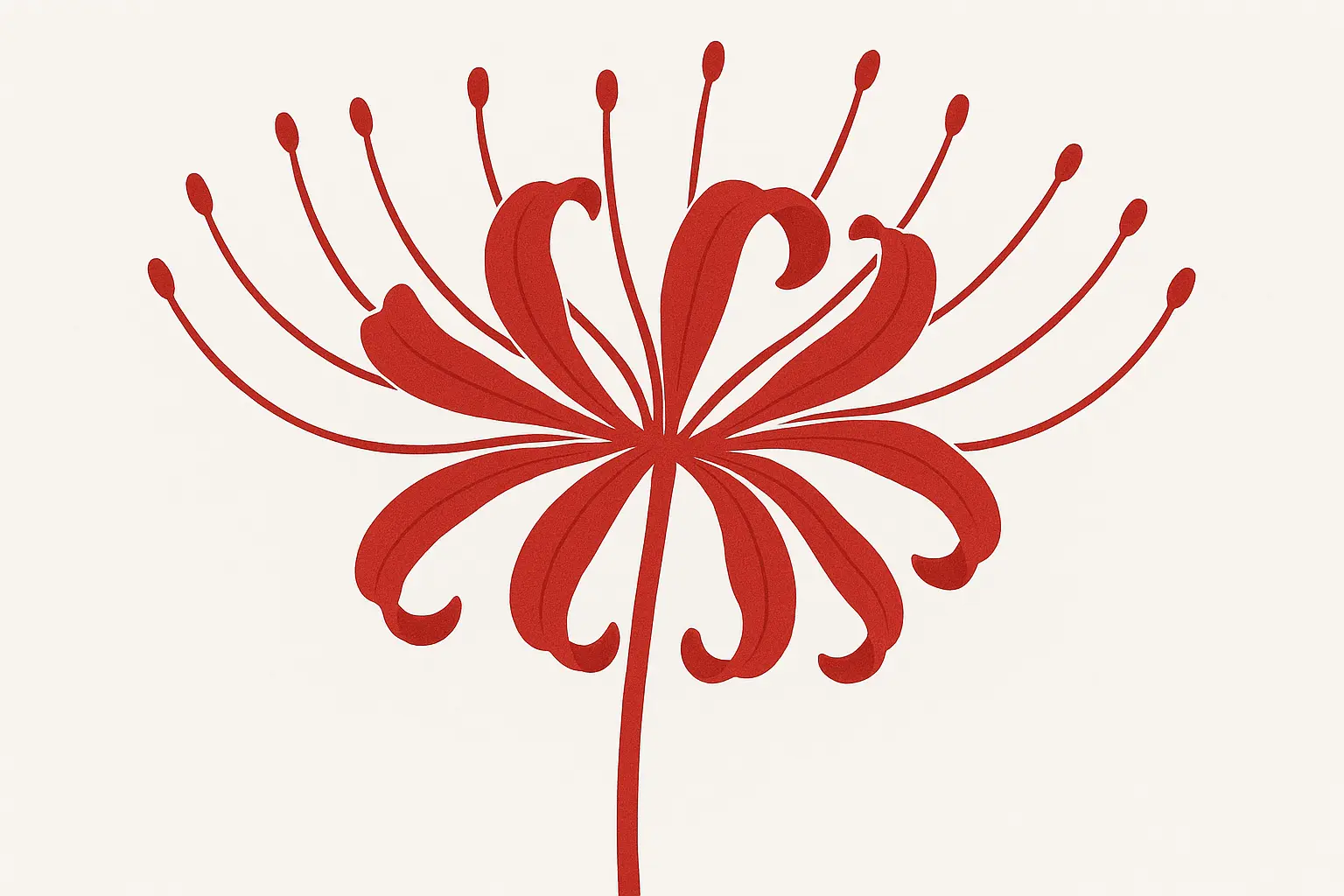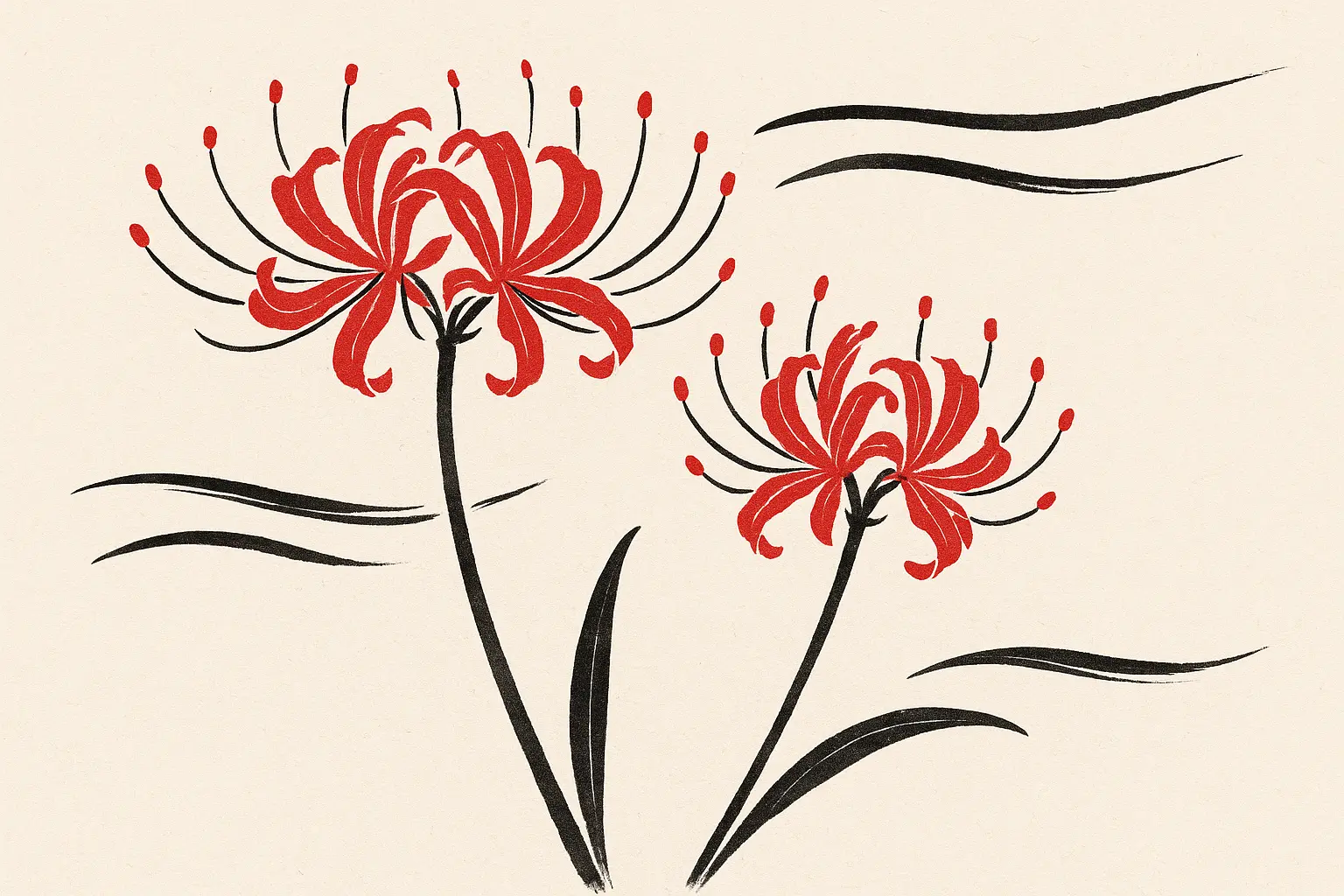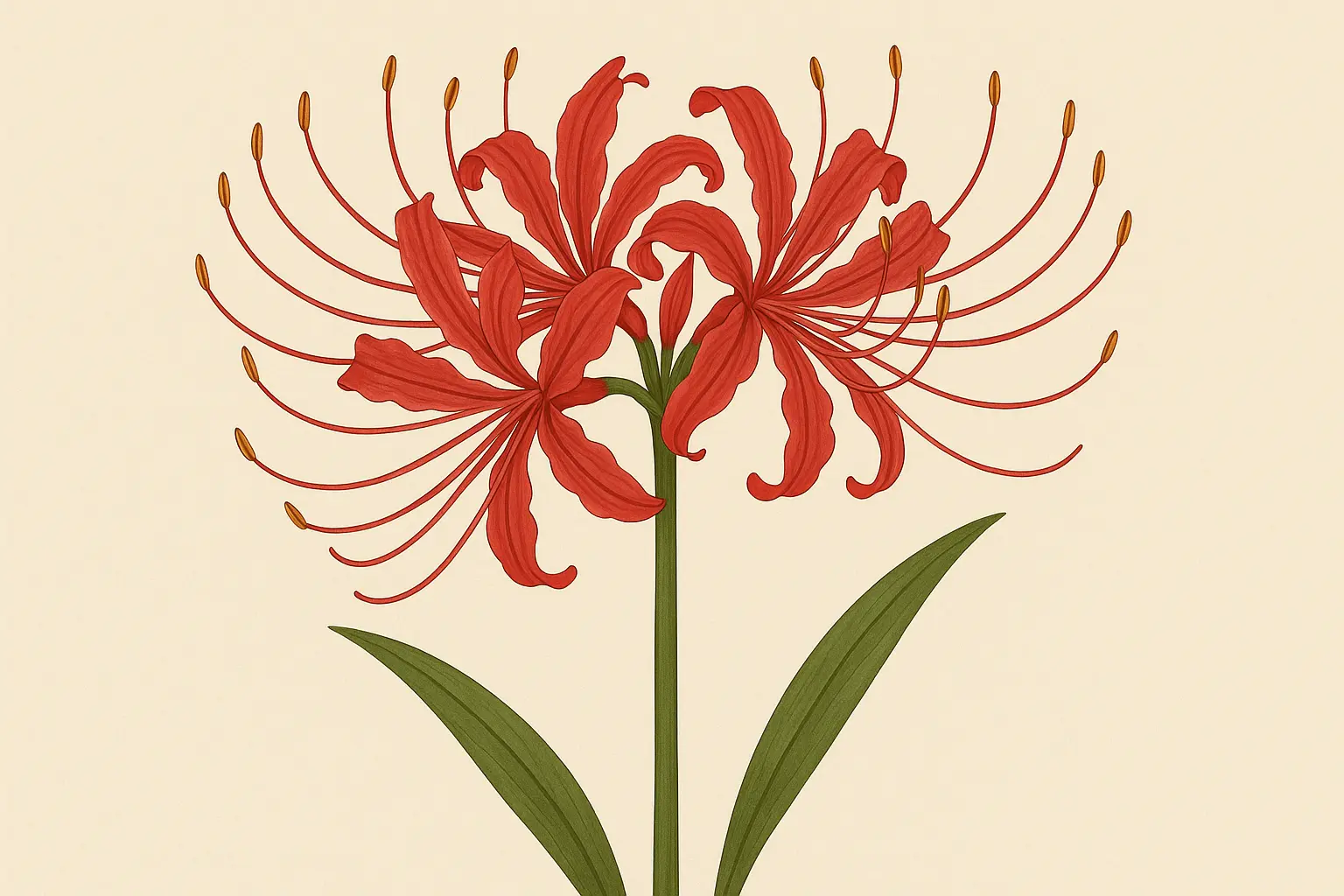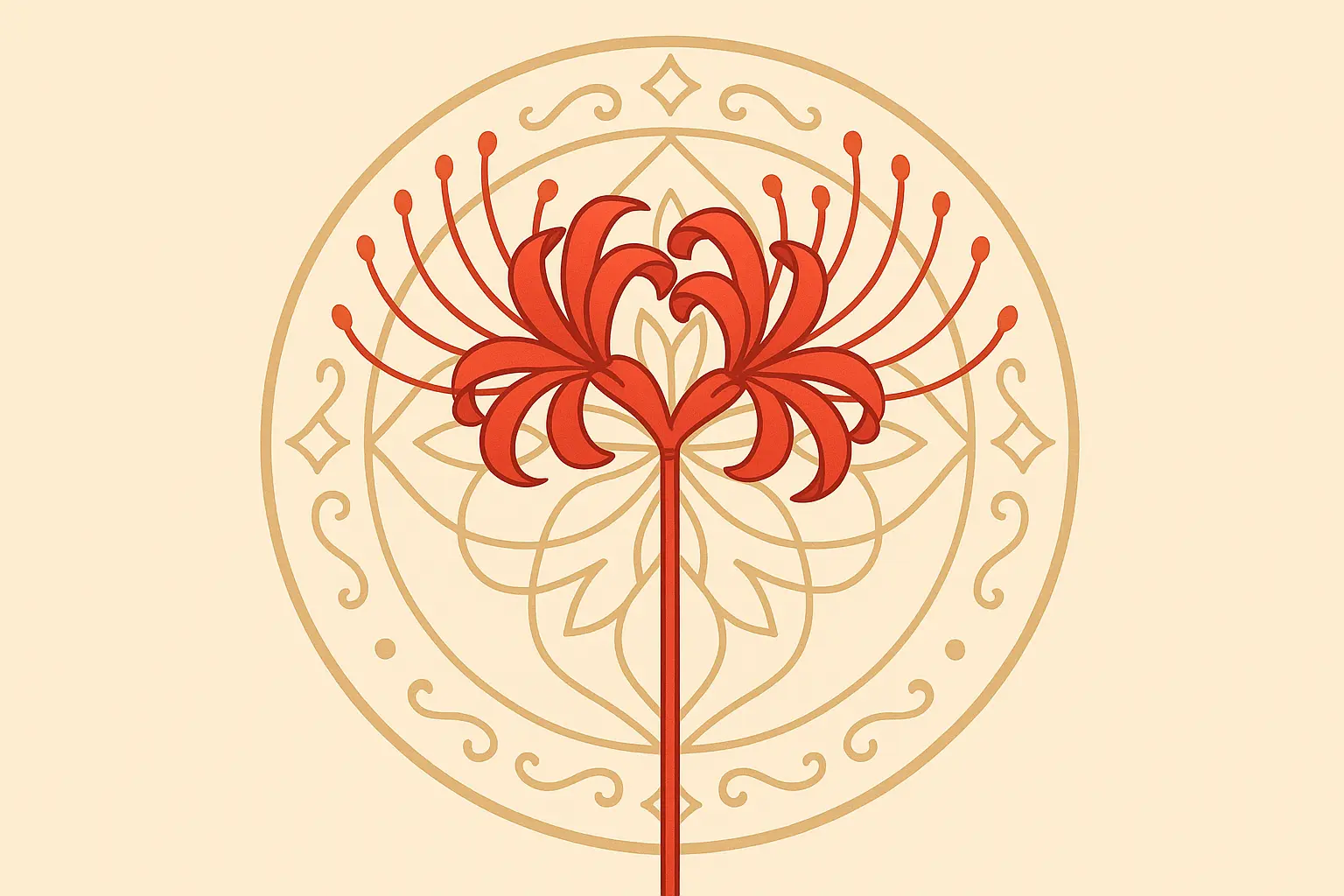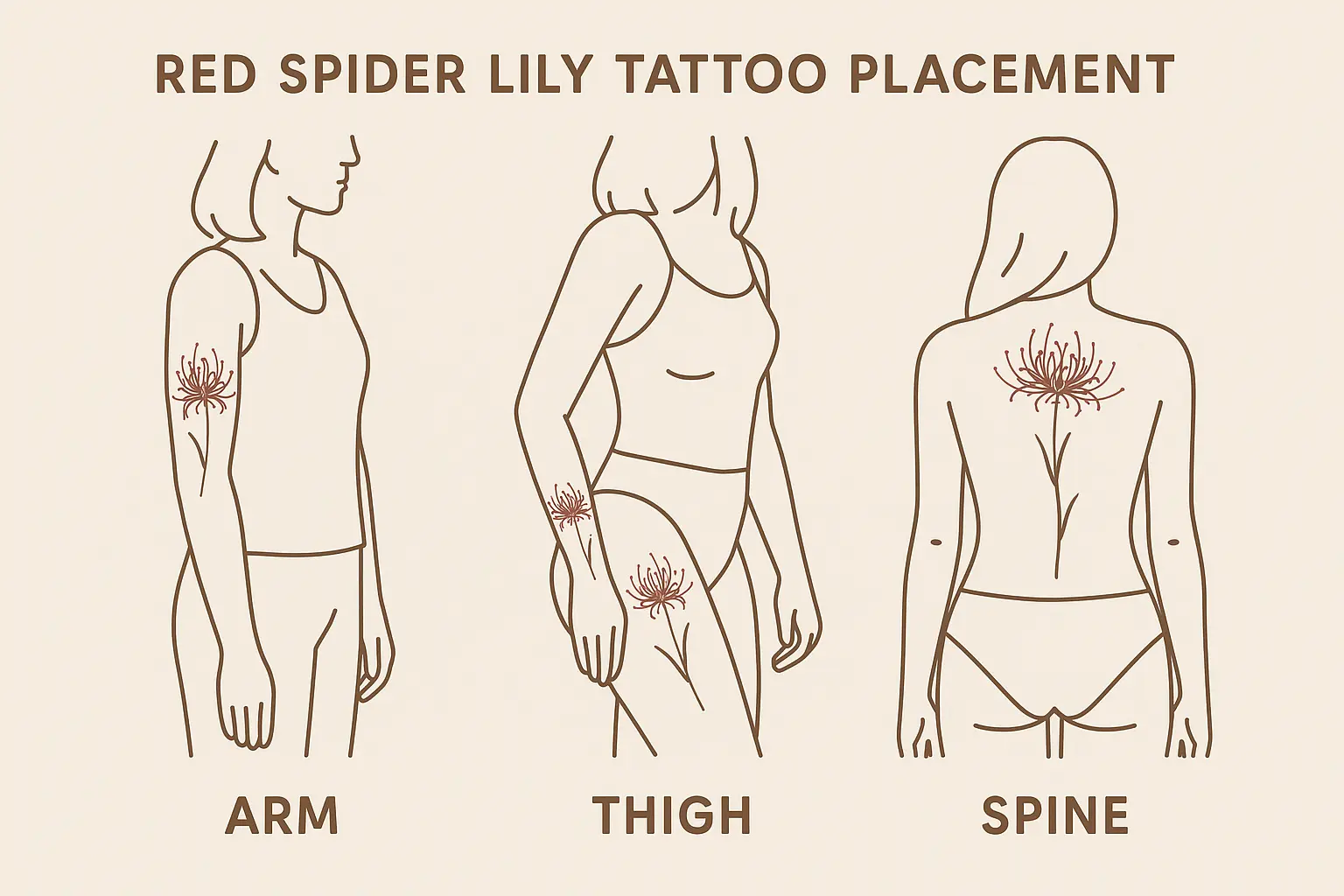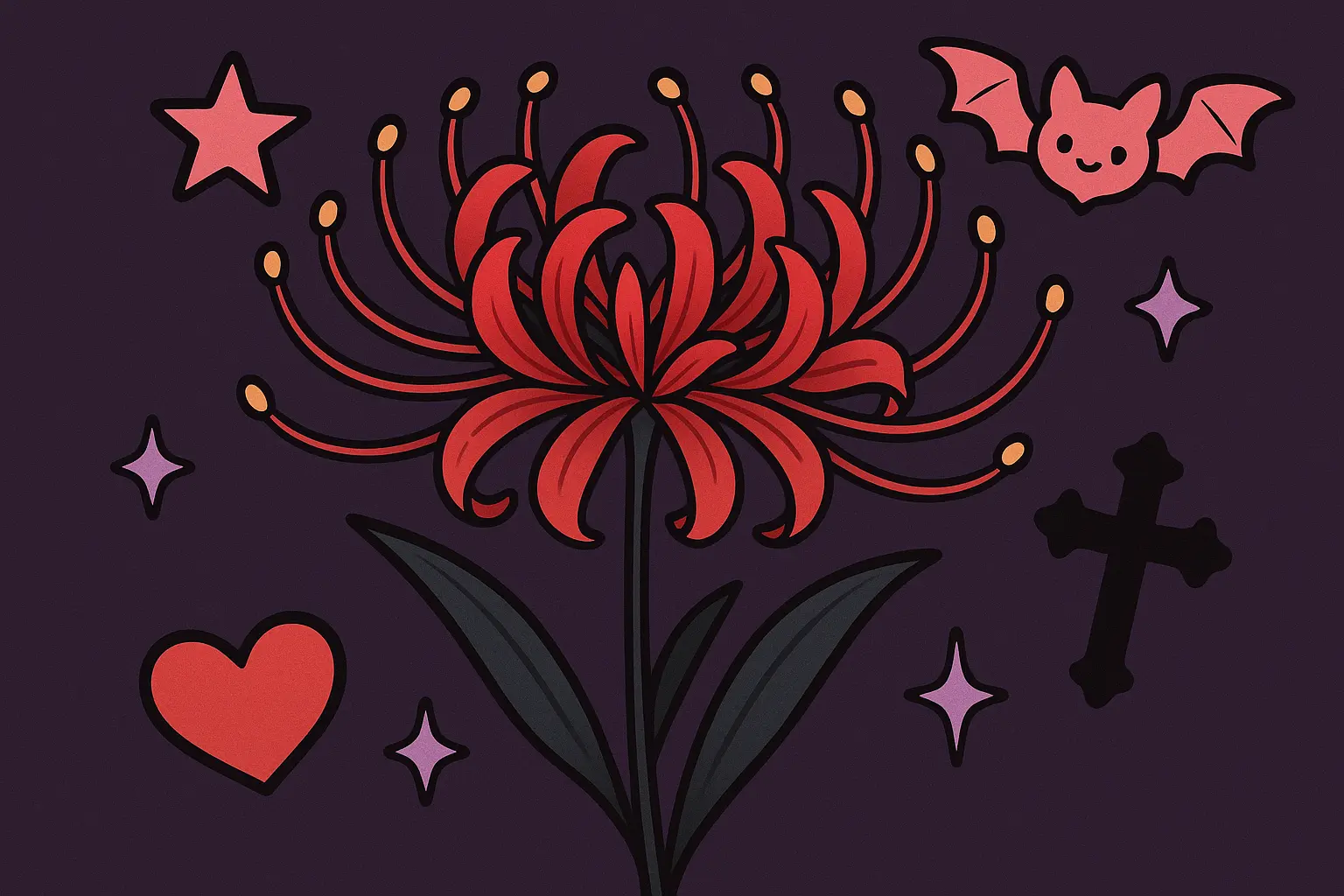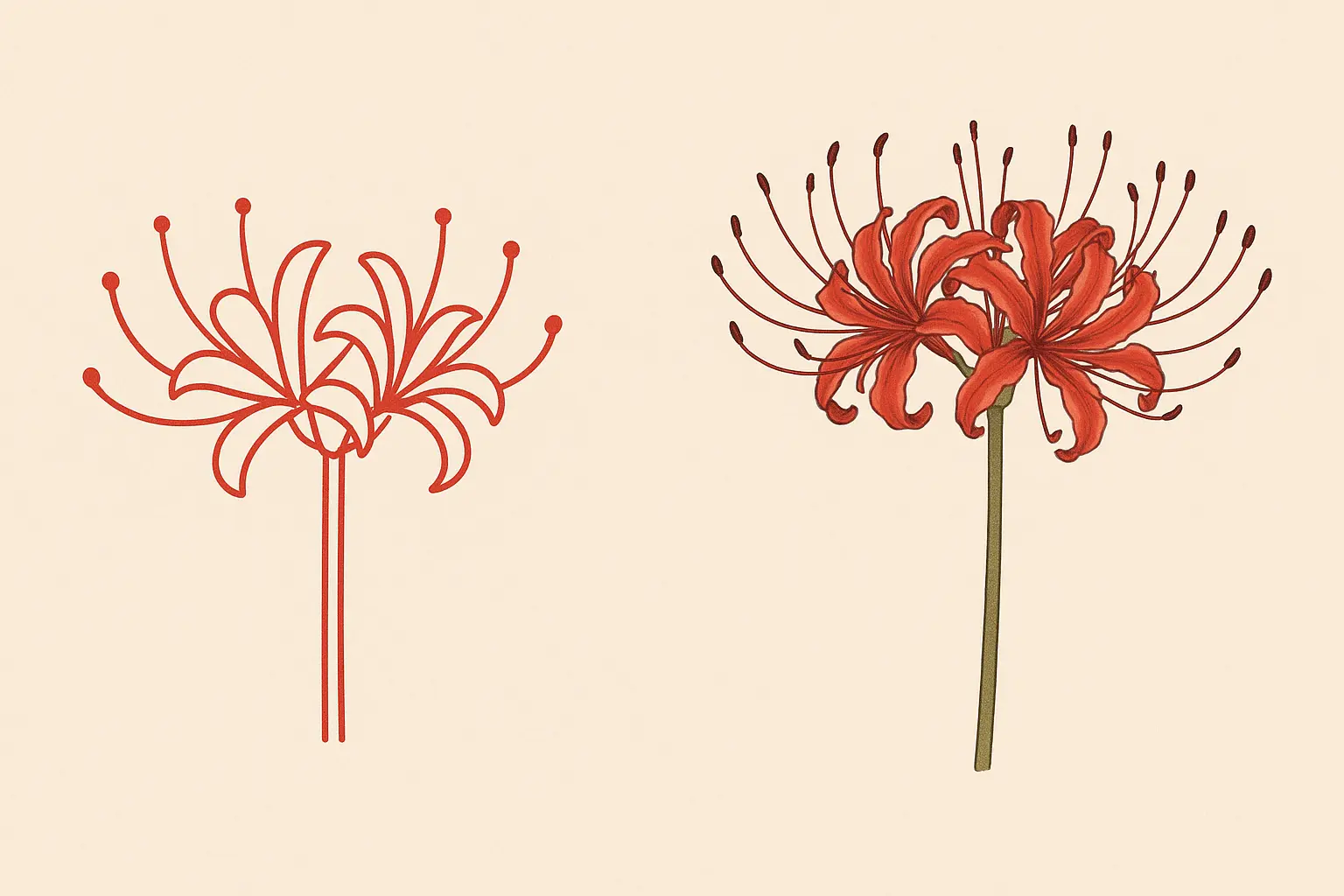25 Stunning Red Spider Lily Tattoo Ideas That’ll Transform Your Body Art Game
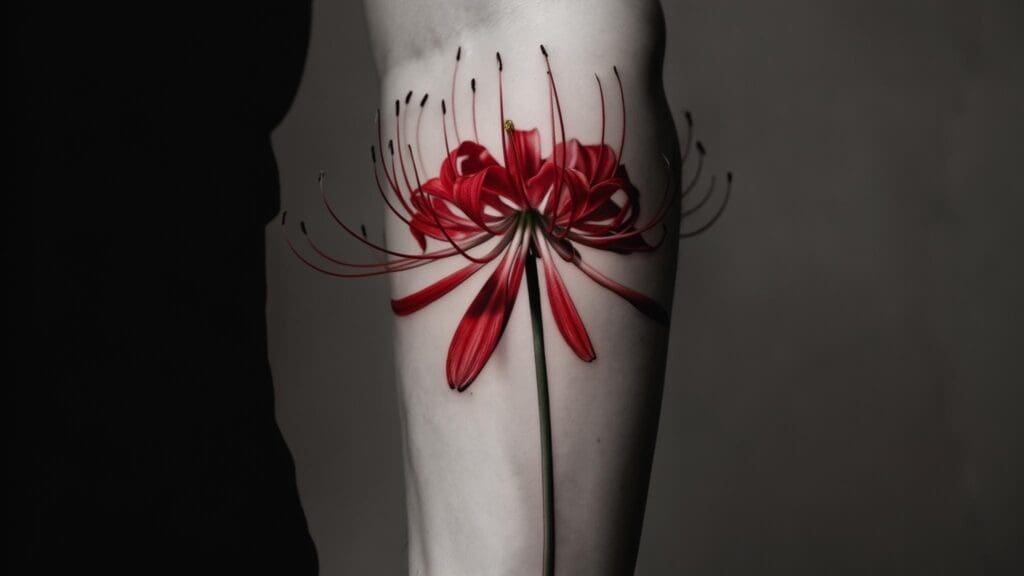
I remember scrolling through social media last year when I stumbled across a breathtaking red spider lily tattoo that stopped me in my tracks. The vibrant crimson petals seemed to dance across the person’s forearm, and I couldn’t help but wonder about the story behind such a powerful design.
Turns out, I wasn’t alone in my fascination. These gorgeous flowers have become huge in both anime culture and tattoo shops, especially after shows like Tokyo Ghoul, Demon Slayer, and Hell Girl made them iconic. If you ugly-cried during those Demon Slayer scenes with the spider lilies (no judgment, we all did), you probably get why these flowers hit different.
You’re probably here because you’ve felt that same pull toward these mysterious blooms. Maybe you spotted them in your favorite anime, or perhaps their deep symbolism speaks to something you’re going through. Whatever brought you here, I’m about to share everything I wish I’d known when I first started researching these tattoos – from traditional Japanese meanings to modern geometric designs that’ll make your artist excited to work with you.
Things I Wish I’d Known Before Getting My Red Spider Lily Tattoo
Before you jump in, there are some things I wish I’d known when I was researching my first tattoo. These aren’t deal-breakers, just stuff that’ll help you make a choice you’ll love years from now. Trust me, a little homework now saves a lot of “why didn’t anyone tell me this?” moments later.
The Cultural Weight Is Real (But Don’t Let It Scare You)
Here’s the thing about spider lilies – they’re not just pretty flowers in Japanese culture. They’re actually pretty heavy symbolically, connected to death and rebirth. I know that sounds intense, but hear me out. In Japan, they call them “higanbana,” and they’re believed to guide souls through reincarnation.
Now, before you panic, this doesn’t mean you’re putting a death curse on your arm or anything dramatic like that. Lots of people embrace this symbolism as representing personal transformation – like coming through a tough breakup, beating addiction, or just becoming who you’re meant to be. But you should definitely vibe with the meaning before you commit to it permanently.
My friend Jessica was going through a rough divorce when she got hers, and she said the death-rebirth symbolism felt perfect for that chapter of her life. Three years later, she still loves what it represents for her.
Will Your Tattoo Still Look Good in 10 Years?
Okay, real talk time. Those gorgeous, intricate spider lily petals with all their delicate curves? They’re going to change as you age. It’s not the end of the world, but red ink naturally spreads through your skin over time, and those crisp lines might get a bit softer after a decade or two.
I’m not trying to scare you off detailed designs – just want you to know what you’re signing up for. A good artist can adjust line weights and spacing so your tattoo still looks like a spider lily even as it naturally changes. Understanding the factors that influence how tattoos age is crucial, especially for detailed designs like these.
Look, I’m gonna be straight with you about what to expect:
Simple line art: You’re looking at maybe $200-500, one or two sessions, and it’ll age like fine wine. Touch-ups maybe every 8-10 years.
Traditional Japanese style: $400-800, a few sessions, still looks great after years. You might want a refresh every 5-7 years.
Photorealistic masterpiece: Buckle up for $800-2000, multiple sessions, and plan to become best friends with your tattoo artist. These need more TLC to stay looking amazing.
Watercolor style: Around $600-1200, looks stunning fresh, but might need touch-ups every few years to keep that pop.
Red Ink Is Beautiful But High-Maintenance
Pro tip I learned the hard way: don’t book a beach vacation right after getting red ink. My friend’s gorgeous crimson petals looked like pink cotton candy after a week in Cancun without proper sunscreen.
Red ink is gorgeous but it’s also the diva of tattoo pigments. Some people’s skin holds red beautifully for decades, while others see fading within a few years. If you’re like me and forget sunscreen exists, you might want to talk to your artist about incorporating some black outlines or darker red shades that age more gracefully.
Sarah, a teacher I know, got a photorealistic red spider lily on her shoulder blade. After three years of beach trips without religious sunscreen use, her vibrant crimson faded to a dull pink. She spent another $300 on touch-ups, but now she’s a sunscreen convert.
Size and Placement Actually Matter More Than You Think
Spider lilies have this distinctive tall, elegant shape with dramatic curves that just don’t work everywhere. Trying to cram one into a tiny space is like trying to fit a giraffe in a shoebox – technically possible, but it loses all its magic.
These flowers naturally grow tall with radiating petals, so they need room to breathe. Your artist needs space to capture those characteristic curved stamens and flowing petals that make everyone go “oh wow, that’s a spider lily!”
Find an Artist Who Gets Botanical Work
Not every tattoo artist can nail flower tattoos, especially when red ink is involved. You want someone who gets excited about floral tattoo designs and has a portfolio full of botanical work that’s aged well.
Stalk their Instagram. Seriously. Look for red tattoos they did a few years ago and see how they’re holding up. Don’t be shy about asking to see healed work – good artists are proud to show off how their pieces age. If they get weird about showing you older work, that’s a red flag.
Make Sure It Actually Means Something to You
Given how loaded these flowers are symbolically, your connection should run deeper than “it looks cool on Pinterest.” I’ve seen too many people get tattoos they thought looked awesome, only to feel disconnected from them later.
Are you honoring someone’s memory? Marking a personal transformation? Celebrating your love for Japanese culture or anime? Having a clear reason will help guide your design choices and make sure you’re still happy with it when you’re 50.
Traditional Japanese Style Red Spider Lily Tattoos
If you want to honor the authentic cultural roots of spider lilies, traditional Japanese styles are where it’s at. These designs have been refined over centuries, so they age beautifully and carry serious cultural weight. Plus, they look absolutely stunning when done right.
1. Classic Higanbana with Wind Bars
This is the real deal – traditional Japanese interpretation with bold red petals, those characteristic curved stamens, and stylized wind bars that represent autumn. It’s like getting a piece of authentic Japanese art on your skin.
The wind bars aren’t just decoration – they show the seasonal timing when spider lilies naturally bloom, adding layers of meaning that anyone familiar with Japanese culture will immediately recognize. This style works best in the 4-8 inch range and ages incredibly well because it follows design principles that have been tested for centuries.
2. Red Spider Lily with Koi Fish
This combination is pure poetry in tattoo form. The spiritual symbolism of spider lilies paired with koi representing perseverance and transformation creates this amazing story about overcoming obstacles while accepting life’s natural transitions.
The flowing water elements complement the flower’s curved petals perfectly, and it works amazing as part of a sleeve or back piece. The cultural significance of koi fish in tattoo art makes this combo particularly meaningful if you’re into deeper symbolism.
3. Minimalist Sumi-e Style
For my fellow minimalists who want something meaningful but not shouty, this one’s perfect. Inspired by traditional Japanese ink painting, it uses bold brushstroke techniques with just hints of color. The whole vibe is about capturing the flower’s essence through confident lines rather than getting caught up in every tiny detail.
Sumi-e style ages like a dream because it relies on strong, confident strokes rather than fine details that might blur. Plus, it’s subtle enough for professional environments where you want people to do a double-take and go “wait, is that…?”
4. Cluster of Three Higanbana
There’s something magical about odd numbers in Japanese design, and three spider lilies at different blooming stages is just *chef’s kiss*. Past, present, and future – or whatever the three stages mean in your life story.
The varying heights create this natural rhythm that’s super pleasing to look at, and you get tons of customization potential while staying true to authentic cultural frameworks.
5. Red Spider Lily with Japanese Calligraphy
If you really want to go all-in on the cultural authenticity, adding meaningful Japanese text is gorgeous. Popular choices include “mono no aware” (awareness of impermanence) or “reincarnation” in elegant brushstroke calligraphy.
Just please, please work with someone who actually understands Japanese to avoid those cringe-worthy tattoo translation fails. You want text that flows naturally with the flower’s lines, not something that looks like it was slapped on as an afterthought.
Realistic and Neo-Traditional Red Spider Lily Designs
If you want something that looks like it could walk right off your skin and into a botanical garden, realistic and neo-traditional styles are your jam. These designs range from “holy crap, is that a photograph?” to stylized botanical art that’s been designed specifically to look amazing as a tattoo.
6. Photorealistic Single Bloom
This is the Instagram-worthy masterpiece that makes people stop and stare. We’re talking hyper-detailed, every-petal-texture, every-stamen-detail perfection. But fair warning – this is a serious commitment.
You’re looking at 2-3 sessions of 4-6 hours each, costs ranging from $800-2000 depending on your location and artist’s reputation, and it needs to be big enough to show off all those details – think thigh or back placement. Understanding the true cost factors helps you budget for this level of detailed work.
7. Neo-Traditional with Bold Outlines
This is like the sweet spot between realistic beauty and tattoo practicality. You get realistic shading with bold, stylized outlines that help the design hold up over time. The enhanced color saturation makes it pop, and the slight stylization means it’s designed specifically to look good on skin.
The bold outlines aren’t just for looks – they’re like the structural support that keeps your tattoo looking crisp as it ages. This style gives you the best of both worlds for most people.
8. Watercolor Red Spider Lily
Picture watercolor painting techniques with splashes and bleeds of red around precise flower line work. The contrast between those crisp botanical details and loose, flowing color is absolutely stunning.
Just know that watercolor effects look incredible when fresh but need more babying than traditional solid color work. Those gorgeous bleeding effects might intensify over time, so chat with your artist about what to expect long-term.
9. Red Spider Lily Bouquet
Multiple flowers arranged like a natural bouquet with different bloom stages and maybe some subtle background elements. This gives you maximum creative freedom – you control how many flowers, how they’re arranged, what stage of bloom each one is in, and what other elements to include.
It’s perfect for creating something truly personal that reflects your individual story while still being clearly recognizable as spider lilies.
10. Macro Detail Focus
This approach zooms way in on specific parts of the flower – maybe extreme close-ups of the stamen details or petal textures. It creates these unique, almost abstract compositions that spider lily enthusiasts will recognize but others might just see as beautiful organic art.
Macro details work great if you want something that’s meaningful to you but doesn’t scream “look at my anime tattoo” in every situation. Plus, the close-up approach opens up interesting placement options that full flower designs might not fit.
Marcus, a graphic designer I know, went with neo-traditional style with bold black outlines on his forearm. The 4-inch design cost $650, took two 3-hour sessions, and after five years, those bold outlines still look perfect while the red shading needed only minor touch-ups. Proof that this style really does age well.
Geometric and Modern Red Spider Lily Interpretations
For those of us who love clean lines and contemporary vibes, geometric and modern interpretations blend those organic flower curves with precise mathematical patterns. You get spiritual symbolism that feels totally current and appeals to modern aesthetic sensibilities.
11. Sacred Geometry Integration
Picture red spider lily silhouettes combined with sacred geometric patterns like the flower of life or golden ratio spirals. The organic curves against those precise geometric lines creates this amazing balance between nature and mathematics.
Sacred geometry adds extra layers of meaning beyond the traditional spider lily symbolism. The mathematical precision represents universal order while the organic flower represents natural cycles – it’s like having both structure and flow in perfect harmony.
12. Mandala-Inspired Circular Design
Multiple spider lily elements arranged in mandala formation with radiating petals creating circular symmetry. This works incredibly well on shoulders, backs, or thighs where circular compositions can really shine without getting distorted by body curves.
Mandala formats naturally work with the spider lily’s radiating petal structure while adding that meditative, spiritual vibe. The circular boundary also helps contain the design, which is great for how it ages over time.
13. Minimalist Line Art
This reduces the flower to its essential lines while keeping it totally recognizable as a spider lily. Single-line or minimal line work appeals to modern minimalist aesthetics while keeping that symbolic meaning in a super subtle way.
Minimalist approaches age gracefully because they rely on simple, bold lines instead of complex details that might blur. They’re also way more professional-environment friendly and perfect for people who want meaningful tattoos without drawing tons of attention.
14. Geometric Frame Composition
Realistic red spider lily placed inside geometric frames like hexagons, triangles, or diamond shapes. The frame creates visual boundaries while the organic flower provides contrast and becomes the focal point within that structured space.
Geometric frames serve double duty – they look cool and they contain the organic elements while providing strong lines that stay crisp as the tattoo ages. The contrast between geometric precision and organic flow is just visually satisfying.
Memorial and Tribute Red Spider Lily Tattoos
Given the spider lily’s connection to death, rebirth, and guiding souls, these flowers are incredibly powerful for memorial tattoos. They honor loved ones while celebrating the idea that death is transformation rather than ending.
15. Portrait Integration
Combining a loved one’s portrait with red spider lilies creates deeply meaningful memorial pieces that honor both memory and spiritual transition. This leverages the Japanese belief that spider lilies guide souls to the afterlife.
Portrait integration demands the highest artistic skill and emotional sensitivity from your artist. You’re creating a permanent memorial, so take your time finding someone who specializes in both portraiture and understands the cultural significance of spider lilies in memorial contexts.
16. Date and Name Memorial
Incorporating important dates or names within the flower’s natural curves or as complementary script elements. The spider lily’s death-rebirth symbolism makes it particularly appropriate for memorial tattoos that honor while celebrating continued spiritual presence.
Think about how you want to add text – flowing script that follows the flower’s curves usually looks more organic than rigid block lettering. You want integration, not just text slapped onto a flower design.
17. Wilted to Fresh Bloom Contrast
Shows the transformation from wilted to vibrant blooms, representing the journey from grief to healing. This design speaks to anyone processing loss while holding onto hope for renewal and growth.
The visual metaphor works powerfully for people dealing with depression, loss, or major life transitions. It captures the essence of what spider lilies represent – that endings can become beginnings.
18. Butterfly Transformation Theme
Red spider lilies combined with butterflies emerging or resting on the petals emphasizes themes of metamorphosis and spiritual evolution. This appeals to people who see death as transformation rather than ending.
Butterflies add movement and lightness to the traditionally somber spider lily symbolism, creating a more uplifting interpretation while still respecting the flower’s deeper meanings.
Placement-Specific Red Spider Lily Designs
Where you put your spider lily tattoo matters way more than you might think. These flowers have this natural elegance that works with some body parts and fights against others. Here’s the real talk on what works where.
19. Wraparound Forearm Design
Your forearm is basically a perfect canvas for spider lilies because of its cylindrical shape. The flowers can wrap naturally around your arm, appearing to grow upward and following your arm’s natural lines. It looks intentional from every angle, which is exactly what you want.
Forearm wraparounds are great if you want something visible that you can still cover for work situations. The cylindrical canvas lets you get creative with compositions that take advantage of your arm’s natural movement. Understanding forearm tattoo costs helps you budget for this popular spot.
20. Spine-Following Vertical
Single or multiple red spider lilies following your spine’s natural curve, with stems aligning with your vertebrae. This placement really emphasizes the flowers’ natural vertical growth while creating these elegant back pieces that work with your body’s architecture instead of against it.
Let’s be real about pain for a hot second – spine tattoos are gonna spice. But the results are absolutely stunning, and you can easily hide it when needed while having maximum dramatic impact when you want to show it off. Understanding tattoo pain levels is crucial before committing to spine placement.
21. Behind-Ear Delicate Bloom
Small, simplified red spider lily perfect for that discrete behind-the-ear spot. You can’t go crazy with details because of the size limitations, but it maintains flower recognition through those characteristic petal curves and red coloring.
Behind-ear placement offers complete discretion – perfect for people in conservative careers or anyone wanting their first tattoo. The small size means less detail, but it works beautifully for people who want meaningful symbolism without making a big statement.
22. Thigh Statement Piece
Your thigh is like the luxury suite of tattoo real estate. Tons of space for maximum detail, multiple flowers, complementary elements, and it stays easily hidden under business attire when needed.
Thigh placement gives you the best of both worlds – plenty of room for detailed work with easy concealment options. The muscle cushioning also makes it more comfortable than bony areas, though you’ll still feel it during longer sessions.
Here’s the real breakdown on placement:
Behind ear: High pain, completely hidden, 1-2 inches max, heals in 1-2 weeks
Forearm: Medium pain, coverable with sleeves, 3-8 inches ideal, 2-3 weeks healing
Thigh: Pretty chill pain-wise, easily concealed, 4-12 inches optimal, 3-4 weeks healing
Spine: That’s gonna hurt, hidden unless you want to show it, 6-15 inches possible, 4-5 weeks healing
Anime and Pop Culture Red Spider Lily Tattoos
For my fellow anime nerds who fell in love with these flowers through shows like Demon Slayer, Tokyo Ghoul, or Hell Girl, this section is for you. These designs let you celebrate your fandom while honoring the traditional flower symbolism.
23. Demon Slayer Inspired
If you ugly-cried during those Demon Slayer scenes with spider lilies, this style might be calling your name. References the show’s use of red spider lilies in emotional scenes, often combined with subtle character elements or meaningful quotes.
What I love about Demon Slayer connections is that the series treats spider lilies with cultural respect while incorporating them into compelling character development. You can reference specific scenes or characters without losing the flower’s deeper meaning. This anime-inspired approach has become super popular among fans who appreciate both the aesthetic and cultural significance.
24. Gothic Anime Aesthetic
Darker interpretation with deeper reds, black accents, and gothic styling popular in anime and manga. Might include subtle skull elements, thorns, or dramatic shading while keeping the flower recognizable and culturally significant.
Gothic styling appeals to people who connect with the spider lily’s death associations but want something more dramatic. The darker aesthetic actually helps with color retention since deeper reds and black accents age better than bright colors. Exploring anime-inspired tattoo designs offers tons more inspiration if you’re drawn to this vibe.
25. Kawaii-Style Simplified
Cute, simplified version with maybe some anthropomorphic features popular in Japanese kawaii culture. This playful approach makes the traditionally heavy flower more approachable while maintaining those cultural connections to Japanese aesthetics.
Kawaii interpretations work perfectly for people who love Japanese culture but prefer lighter symbolism. The cute styling keeps cultural authenticity while shifting focus from death-rebirth themes to general Japanese aesthetic appreciation.
Jessica, an anime enthusiast I know, chose a Demon Slayer-inspired red spider lily with subtle references to Nezuko’s character arc. Her artist designed flowing petals that echoed the character’s kimono patterns while keeping the traditional higanbana symbolism. The 5-inch thigh piece cost $750 and perfectly balanced pop culture love with cultural respect.
Simple vs. Complex Design Analysis
Here’s the thing – simple doesn’t mean boring, and complex doesn’t automatically mean better. Each approach has its own benefits and challenges, and the right choice depends on your lifestyle, budget, and long-term vision.
Simple Design Benefits
Minimalist line art features clean, continuous lines forming the spider lily’s distinctive curved petals and stamens. Healing time runs 1-2 weeks with minimal fuss, and you’re looking at touch-ups maybe every 5-10 years if you want them.
Behind-ear delicate blooms measure about 1-2 inches, focusing on essential flower elements through fine-line technique with subtle red shading. Perfect for professional environments where discretion matters most.
Simple designs age like fine wine because they rely on bold, clear lines instead of intricate details that might blur over time. They’re also way more budget-friendly and require less time commitment from both you and your artist.
Complex Design Reality Check
Photorealistic single blooms need 6-10 inches for optimal detail retention across 2-3 sessions of 4-6 hours each. Multiple needle configurations, color layering, detailed shading, 3-4 week healing periods, and careful aftercare.
You’re looking at $800-2000 depending on your artist and location, with touch-ups recommended every few years for color vibrancy. Best placement options include thigh, back, or upper arm where you have room to showcase all those details properly.
Sacred geometry integration demands precision in both botanical work and geometric elements. Usually involves red spider lily with black geometric lines, though the geometric parts typically age better than fine floral details.
Design Quality and Cultural Authenticity Assessment
Not all red spider lily tattoos are created equal. Some nail both the artistic execution and cultural respect, while others… well, let’s just say they miss the mark. Here’s how to spot the difference.
What Makes a Design Exceptional
Photorealistic single blooms achieve museum-quality botanical accuracy when done right, requiring high-resolution reference files and serious color-matching expertise for optimal results.
Traditional higanbana with wind bars maintains authentic Japanese artistic principles with aging characteristics that have been proven over centuries of traditional tattoo work.
Neo-traditional with bold outlines combines artistic enhancement with technical tattoo requirements for optimal skin translation and long-term durability.
Cultural Authenticity Reality Check
Traditional Japanese designs excel in cultural authenticity and symbolic accuracy. Classic higanbana with wind bars scores highest for traditional representation, while designs incorporating Japanese calligraphy provide additional cultural depth.
Modern interpretations can balance contemporary aesthetics with cultural respect. Sacred geometry integration maintains spiritual significance while appealing to modern sensibilities without compromising traditional symbolism.
Anime-inspired designs require careful handling to maintain cultural respect while incorporating pop culture elements. The key is understanding how the source material treats spider lily symbolism and honoring that in your design.
Here’s a quick breakdown of what to expect:
Traditional Japanese: Excellent cultural authenticity, high quality, advanced skill required, ages excellently
Photorealistic: Good cultural authenticity, very high quality, expert skill required, good with maintenance
Neo-Traditional: Good cultural authenticity, high quality, advanced skill required, ages very well
Minimalist: Fair cultural authenticity, medium quality, intermediate skill required, ages excellently
Anime-Inspired: Variable cultural authenticity, medium-high quality, intermediate-advanced skill required, ages well
Professional Compatibility and Lifestyle Considerations
Let’s talk about real life for a minute. Your tattoo needs to work with your actual lifestyle, career, and daily reality – not just look good on Instagram.
Professional Environment Reality
High professional compatibility options include behind-ear placements that stay completely hidden, minimalist designs offering subtle sophistication, and thigh statement pieces that business attire easily conceals.
Moderate professional compatibility covers forearm designs you can cover with business attire and small geometric versions that don’t draw excessive attention.
Low professional compatibility involves hand or neck placements with high visibility in conservative industries, plus large, vibrant realistic designs that prove difficult to conceal in formal environments.
Money Talk (Because Nobody Likes Sticker Shock)
Low maintenance designs include traditional Japanese styles with proven aging characteristics requiring touch-ups every 8-10 years, bold geometric patterns with strong structural elements, and minimalist approaches with simple lines needing minimal upkeep.
Premium investment options ($1500-3000+) cover large photorealistic pieces, complex portrait integration, and multi-session geometric mandala work.
Budget-friendly options ($200-500) include minimalist line work, small behind-ear designs, and simple geometric frames.
Pain Tolerance Real Talk
High pain areas involve spine-following designs with direct bone contact, behind-ear placement with sensitive nerve proximity, and ribcage memorial pieces with breathing complications during sessions.
Moderate pain areas include forearm wraparounds with muscle cushioning but some nerve sensitivity, and thigh placements with good muscle coverage but occasional sensitive spots.
Lower pain areas cover upper arm traditional designs with excellent muscle cushioning and shoulder mandala work with substantial tissue coverage.
How Tattoo Generator IQ Can Perfect Your Design
Look, I get it – choosing the perfect red spider lily tattoo can feel overwhelming with all the cultural considerations, design options, and technical factors. That’s where Tattoo Generator IQ comes in handy.
Cultural Authenticity and Design Help
The platform includes authentic Japanese tattoo portfolios and cultural consultation, so your red spider lily design respects traditional higanbana symbolism while allowing for personal interpretation. It identifies culturally inappropriate combinations and suggests authentic alternatives that honor the flower’s spiritual significance.
The AI simulates how your design will look after 5, 10, and 20 years, considering red ink fading patterns for different skin tones, line weight optimization for long-term clarity, and color saturation adjustments for sustained vibrancy.
Professional Guidance That Actually Helps
The platform analyzes your career requirements and suggests optimal placements that balance personal meaning with professional compatibility. Interactive body mapping shows concealment options for different clothing styles and workplace environments.
Based on your chosen style complexity, it recommends artist specialization requirements including botanical illustration expertise for realistic designs, Japanese traditional training for authentic higanbana work, color theory mastery for vibrant red pigment application, and geometric precision skills for sacred geometry integration.
Maintenance and Education Resources
Get customized aftercare schedules and touch-up timelines based on your specific design complexity, placement, and lifestyle factors. The platform calculates long-term ownership costs including initial investment and maintenance requirements for realistic budgeting.
Access comprehensive guides about red spider lily symbolism across different cultures, ensuring your tattoo choice aligns with your personal beliefs and respects traditional meanings. Learn about seasonal significance, spiritual associations, and modern interpretations for complete cultural understanding.
Final Thoughts
Look, at the end of the day, you’re the one who has to wake up with this tattoo every morning. All the research in the world doesn’t matter if it doesn’t make you smile when you catch it in the mirror.
Red spider lily tattoos are more than just beautiful body art – you’re embracing centuries of cultural significance and personal transformation potential. Whether you’re drawn to traditional higanbana authenticity, modern geometric interpretations, or anime-inspired celebrations of pop culture, there’s a design in here that speaks to your story.
The key is understanding your personal connection to the symbolism, being realistic about practical stuff like placement and maintenance, and finding an artist whose work makes you go “holy crap, yes.” Don’t let anyone talk you out of something that feels right for you.
Remember that these tattoos carry emotional weight beyond their visual beauty. Take time to reflect on what transformation, remembrance, or spiritual journey you want your tattoo to represent. Yeah, red ink needs some TLC, but it’s not like you’re signing up for a part-time job. Slap on some sunscreen, don’t pick at it while it heals, and maybe plan for a touch-up every few years if you want it looking fresh.
The investment in thoughtful planning and skilled execution will reward you with a meaningful piece of art that grows more significant with each passing year. Trust your gut, find an artist whose work speaks to you, and embrace the journey of bringing this powerful symbol to life on your skin.

